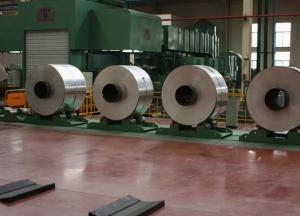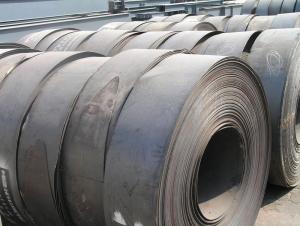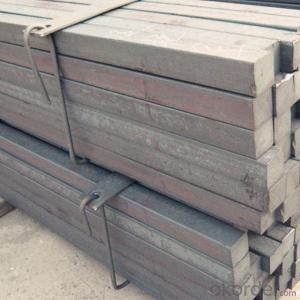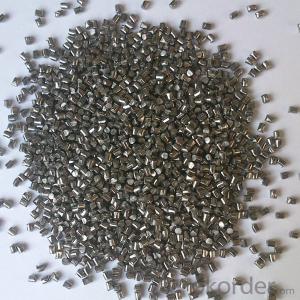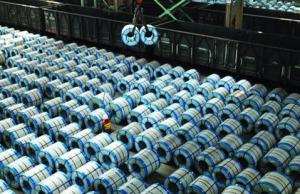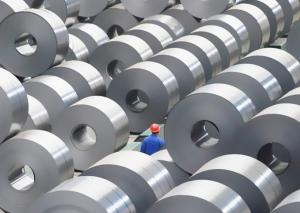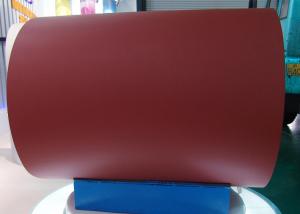Centrifugal Casting Heat Resistant Furnace Roll for 2015
- Loading Port:
- Tianjin
- Payment Terms:
- TT OR LC
- Min Order Qty:
- 1000 PCS
- Supply Capability:
- 10000 PCS/month
OKorder Service Pledge
OKorder Financial Service
You Might Also Like
Quick Details
| Model Number: | DTC | Application: | Heat Treatment Furnace | Material: | Aluminum,heat resistant alloys,cobalt base alloys |
| Dimensions: | OEM | Dimension: | OD70 to 1400mm | Standard: | ANSI, ASTM, ASME, DIN, GB |
| Technicas: | Centrifugal casting | TEST: | PT UT RT |
Packaging & Delivery
| Packaging Detail: | wooden case |
| Delivery Detail: | 30days |
Specifications
1)bulk production
2)full test instrument and strict quality control system
3)best price
centrifugal casting heat resistant furnace roll
Material | High nickel and high chrome heat resistant alloys, cobalt base alloys, like HU, HT, HK, HP, HW, 24/24NbTiZr, 50Cr/50Ni (2.4813), 1.4865, 1.4849, 1.4848, 1.4410, 1.4059, 1.4841, 1.4845, 1.4852, 2.4879 or as per customer's requirements
|
Application | Working at high temperature environment on average: 800 to 1200°C,used in steel mills like continuous annealing furnace, heating treatment furnace, etc. |
Process | Barrel/tube is made by centrifugal casting and will be machined subsequently. Shaft/journal will be |
Standard | ANSI, ASTM, ASME, DIN, GB |
Specification | According to drawings |
- Q:What are the environmental impacts of steel production and the use of steel products?
- Steel production and the use of steel products have significant environmental impacts. The production process itself is energy-intensive and releases a substantial amount of carbon dioxide, contributing to climate change. It also generates air and water pollution through the emission of various pollutants and the production of hazardous waste. Additionally, the extraction of raw materials, such as iron ore and coal, contributes to deforestation, habitat destruction, and the loss of biodiversity. However, steel is a durable and recyclable material, so the environmental impacts can be mitigated through efficient recycling practices and the use of renewable energy sources in production.
- Q:How is steel used in the construction of warehouses and storage facilities?
- Steel is commonly used in the construction of warehouses and storage facilities due to its strength and durability. It is used for the framework and support structures, as well as for roofing and siding. Steel provides a secure and reliable structure that can withstand heavy loads and harsh weather conditions, making it ideal for these types of buildings.
- Q:What are the different types of steel angles and their applications in the construction of bridges?
- There are several types of steel angles commonly used in the construction of bridges. These include equal leg angles, unequal leg angles, and L-shaped angles. Equal leg angles have equal length legs and are often used in the fabrication of trusses and bridge girders. Unequal leg angles have different length legs and are commonly used in the construction of stiffeners and bracing elements. L-shaped angles, also known as corner or angle irons, are used for various purposes, such as providing structural support and connections in bridge components. Overall, steel angles play a crucial role in ensuring the stability, strength, and durability of bridges.
- Q:How is steel used in the aerospace industry?
- Steel is used in the aerospace industry for various applications such as structural components, landing gears, engine parts, and aircraft frames. It provides strength, durability, and resistance to high temperatures, making it suitable for withstanding the rigorous demands of aerospace operations.
- Q:What are the properties of heat-resistant steel for high-temperature applications?
- Heat-resistant steel for high-temperature applications possesses several key properties. Firstly, it has a high melting point, allowing it to withstand extreme temperatures without deformation or failure. Additionally, it exhibits excellent thermal stability, maintaining its mechanical strength and structural integrity even at elevated temperatures. Heat-resistant steel also possesses good oxidation resistance, preventing the formation of scale or oxide layers when exposed to oxygen-rich environments. Furthermore, it has low thermal expansion, reducing the risk of thermal stress and cracking. Lastly, heat-resistant steel often has good creep resistance, enabling it to withstand prolonged exposure to high temperatures without significant deformation or failure.
- Q:How is steel plate rolled for improved thickness accuracy?
- Steel plate is rolled for improved thickness accuracy through a process called cold rolling. In this method, the steel plate is passed through a series of rollers that gradually reduce its thickness, ensuring a uniform and precise thickness across the entire plate. Additionally, the use of advanced control systems and measurement techniques during the rolling process helps to further enhance the accuracy of the thickness.
- Q:What are the applications of steel plates?
- Steel plates have a wide range of applications due to their strength, durability, and versatility. They are commonly used in construction for building structures, bridges, and roads. Steel plates are also essential in manufacturing heavy machinery and equipment, such as ships, tanks, and cranes. Additionally, they are utilized in the automotive industry for making vehicle parts and frames. Moreover, steel plates are integral in the energy sector for constructing power plants, pipelines, and offshore platforms. In summary, the applications of steel plates are numerous and crucial in various industries.
- Q:How is steel used in the manufacturing of electrical equipment?
- Steel is commonly used in the manufacturing of electrical equipment for its durability and strength. It is used to construct the structural framework of equipment such as transformers, generators, motors, and electrical enclosures. Steel also provides a stable base for components and helps in heat dissipation, ensuring the safe and efficient operation of electrical equipment.
- Q:How is steel used in the manufacturing of machinery and equipment?
- Steel is used in the manufacturing of machinery and equipment due to its exceptional strength, durability, and versatility. It is commonly used to create the structural frames, components, and parts of various machines and equipment. Additionally, steel can be easily shaped, welded, and machined, allowing for precise customization and assembly. Its resistance to wear, corrosion, and high temperatures makes it ideal for heavy-duty applications, ensuring the longevity and reliability of machinery and equipment in various industries.
- Q:How are steel sheets used in the automotive industry?
- Steel sheets are widely used in the automotive industry for various applications such as body panels, chassis components, structural reinforcements, and safety features. Due to their exceptional strength, durability, and formability, steel sheets provide the necessary stability, impact resistance, and crash protection required in vehicles. Additionally, these sheets can be easily molded, shaped, and welded to create complex automotive parts, ensuring the safety and performance of automobiles.
1. Manufacturer Overview |
|
|---|---|
| Location | |
| Year Established | |
| Annual Output Value | |
| Main Markets | |
| Company Certifications | |
2. Manufacturer Certificates |
|
|---|---|
| a) Certification Name | |
| Range | |
| Reference | |
| Validity Period | |
3. Manufacturer Capability |
|
|---|---|
| a)Trade Capacity | |
| Nearest Port | |
| Export Percentage | |
| No.of Employees in Trade Department | |
| Language Spoken: | |
| b)Factory Information | |
| Factory Size: | |
| No. of Production Lines | |
| Contract Manufacturing | |
| Product Price Range | |
Send your message to us
Centrifugal Casting Heat Resistant Furnace Roll for 2015
- Loading Port:
- Tianjin
- Payment Terms:
- TT OR LC
- Min Order Qty:
- 1000 PCS
- Supply Capability:
- 10000 PCS/month
OKorder Service Pledge
OKorder Financial Service
Similar products
New products
Hot products
Related keywords



